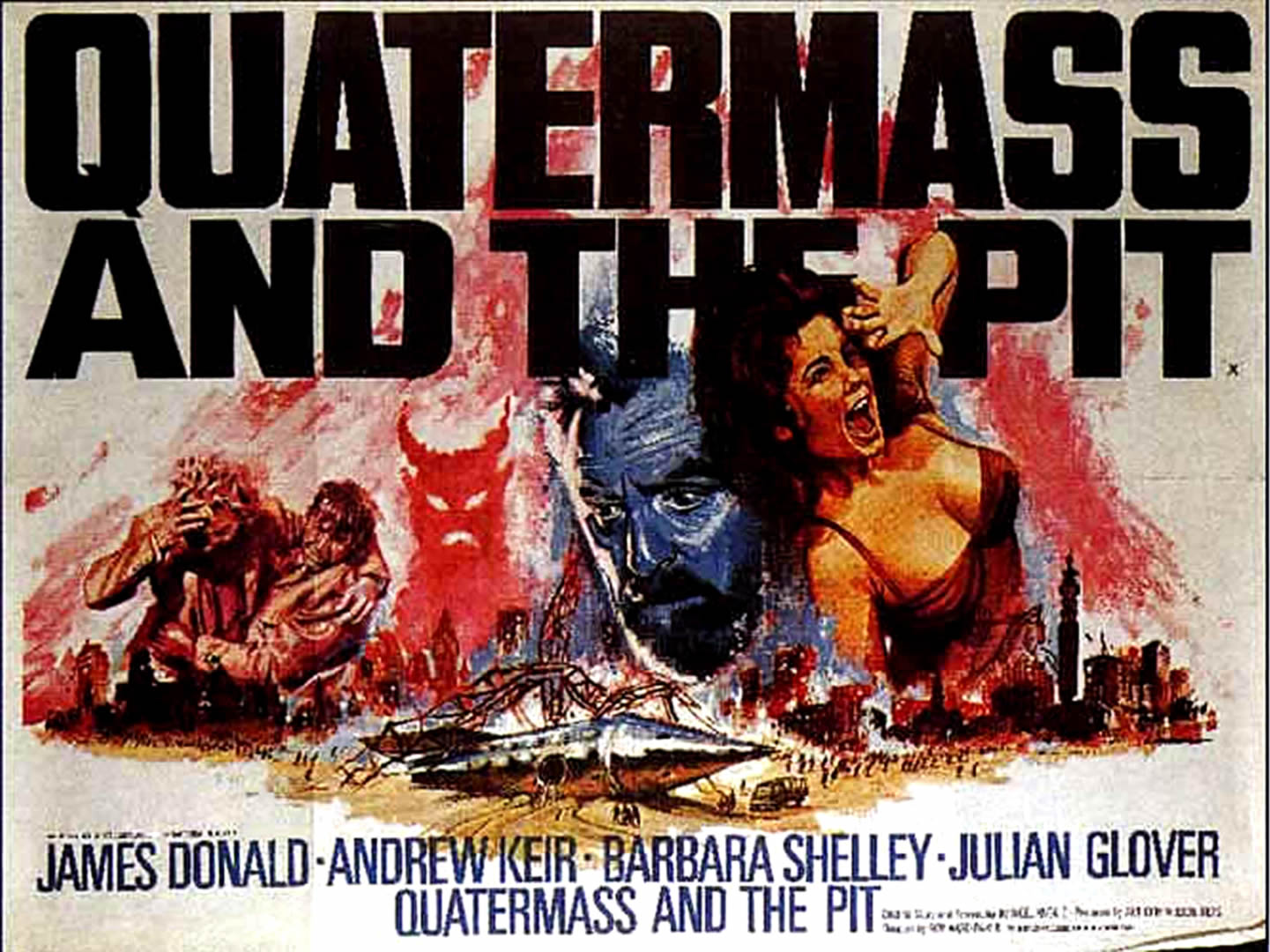‘Five Million Years to Earth’ is the US title for the British film, ‘Quartermass and the Pit’. It’s based on a BBC six-part TV serial, broadcast in December 1958 and January 1959. There were two prior TV series, The Quartermass Experiment (1953) and Quartermass II (1955), followed by two films of the same name released in 1955 and 1957 respectively. The original BBC TV Series can be seen on Youtube in 21 separate segments (however, the year of release, 1955, is confused with the year Quartermass II, the TV series, and The Quartermass Experiment, the film, were released).
The advantage of the 1967 film over the 1958-59 TV serial, is that it’s condensed, and the story moves along at a better, somewhat brisk pace. The main disadvantage of the 1967 film is that Quartermass is woodenly played by Andrew Keir, who hated acting in the film because he believed the director really wanted another actor (Kenneth More) to play the role. Keir plays Quartermass deadpan and bores us to tears. Contrast Keir’s acting with Andre Morell in the original TV series. Morell reminds one of the wry Leo G. Carroll and one of the reasons why the TV series was so successful, was precisely due to Morrell’s air of sophistication and dry wit.
Despite moving at a faster pace in the film version, ‘Five Million Years to Earth’ is still nothing more than what one critic at the time called a “wordy, blob of hokum”. It takes an inordinate amount of time before the big reveal, which is when the creatures are discovered. In the TV series, the insect-like creatures actually look pretty realistic—this is probably due to the fact that the TV series was filmed in black and white. Now in crisp, 60s color, these so-called ‘arthopods’, which resemble really big grasshoppers, appear as too obvious, papier-maché models. There’s all quite a bit of overacting here: probably the most guilty is Duncan Lamont who plays Sladden, the drill operator. Once the repressed memories from the aliens are unleashed, Sladden makes his way to a cemetery, looking more like a goofy, drunken reveler at a party, than someone with severe psychiatric problems. When the masses are possessed at film’s end, none of it feels realistic or scary. Contrast that again with the TV series, which manages to convey a heady verisimilitude. I should also mention that the music is vastly superior in the original series than the paltry, clichéd, 60s score, written for the film.
The characterizations of the principals also fail to draw one in. Colonel Breen is your basic military martinet, opposed by Quartermass, who represents the triumphant voice of pacifism. Breen is the one who comes up with the idiotic idea that the alien ship is basically a Nazi missile dressed up as a propaganda tool and the defense minister immediately announces that it’s safe for the press to examine the spaceship inside the subway station. As it turns out, no one heeds the ‘brilliant’ Quartermass, who has warned everyone of the alien danger; it’s only when Dr. Roney, Quartermass’ paleontologist colleague/comrade at the site, crashes a crane into the alien spectral image, that the repressed memories of the crazed mob are ‘shut off’ at the scene, thus preventing mass havoc from becoming a garish reality, all over Britain.
Julian Glover matches Anthony Bushell, who plays Breen in the TV series; both manage to convey the character’s lack of flexibility and unbending attitude as an authority figure. It should be noted that the scenarist, Nigel Kneale, who wrote the original script, has Breen basically hypnotized by the aliens before being done in by them. Kneale is suggesting here that authoritarian types are inherently passive and paints Breen as one who too easily acquiesces to voices in authority during a time of crisis.
In the BBC series, Dr. Roney is played by a rather blasé, Cec Linder, a Canadian actor; James Donald, who reminds me of a little like Michael York, seems more right for the part in the film, as he has more of an aura of sophistication than Linder. The more plain-looking Christine Finn as Barbara Judd in the original TV series, seems to work better than Barbara Shelley in the film, as there’s more of a contrast when the Judd character suddenly becomes possessed.
For all those film goers who view ‘Five Million Years to Earth’, as a cult classic, I can only once again recommend that you watch some of the original BBC TV series on Youtube. It’s a shame that the 1967 film wasn’t shot in black and white, as the film needed much more of a documentary feel to it (which was accomplished in the TV series). It’s surprising that Roy Ward Baker, the director of the most excellent, ‘A Night to Remember’, the 1958 film about the Titanic, was unable to successfully handle the special effects here in ‘Five Million Years to Earth’. Had he been successful, it still wouldn’t have mattered that much—’Five Million Years to Earth’, is still a film that surprisingly lacks (in the words of a film critic writing at the time the film was released), “imagination”.

